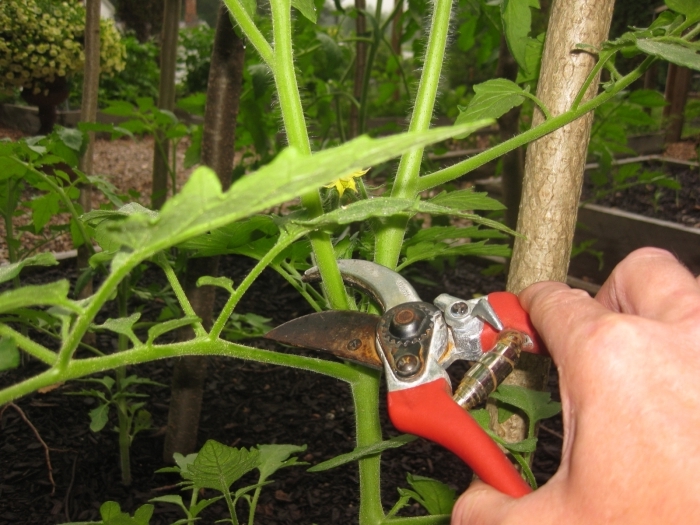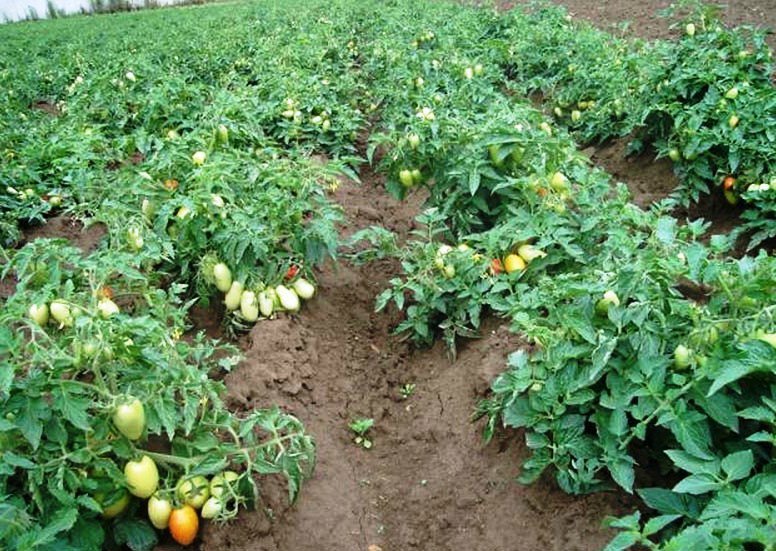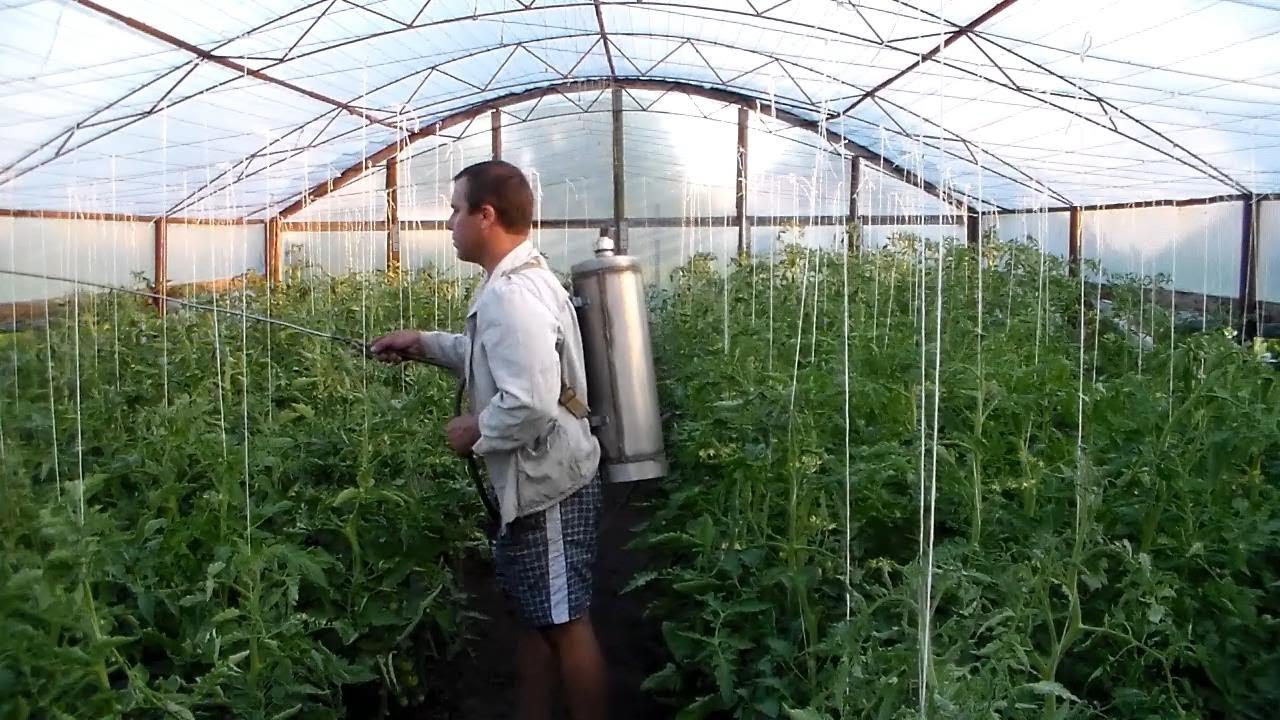How to care for tomatoes after planting
Content
Watering
Watering tomatoes is very important, because a lot depends on how correctly you do it: how the plant takes root, how quickly it "adapts" at the planting site and after the procedure. It is also important to protect the plant from various diseases. To maintain a healthy plant, you need to maintain an optimal temperature and adhere to proper watering. Tomatoes can be sown only after seed treatment. This rule also applies to seeds of such a common variety as Pinocchio.
Several factors affect the watering of seedlings, the main ones of which are:
- What is the quality of tomato seedlings.
- What are the physical properties and quality of the soil in which the plants were planted.
- What are the weather conditions during disembarkation.

The seedlings that are adapted to the temperature regime are considered hardened. It is enough to water it abundantly once a day. The approximate water consumption for irrigation is one bucket for four holes or, for one hole, about three liters of water. This parameter is especially important to observe if seedlings were planted in a trench. Watering time interval - preferably before sunrise, that is, as early as possible, sutra. If the sun's rays have dried the ground very much in a day, you can also water it in the evening, but for one plant - one and a half to two liters of water. It is also important not to flood the plant too much, otherwise the soil will be oversaturated, there will be a lack of oxygen for the roots of tomatoes - from this they can also die.
The optimum soil temperature for proper plant development and a good harvest is at least twenty degrees Celsius. If the soil temperature is less than fifteen degrees, they will begin to develop more slowly, and at a temperature of less than one degree, they may die altogether.
To a large extent, caring for tomatoes is important in order to get high yields as a result.  Experts recommend that even when buying seedlings, pay attention to the temperature at which they grew, since this is very important for their future fate, including for yield. Another thing is when you yourself raised the seedlings, then you know for sure its origin. It is good to grow a variety like Pinocchio from seeds. Those seedlings, which are grown at home, on the windowsill, require "hardening". To do this, you need to take them outside for several hours so that they get used to daylight, wind and sun. It also happens with greenhouse seedlings.
Experts recommend that even when buying seedlings, pay attention to the temperature at which they grew, since this is very important for their future fate, including for yield. Another thing is when you yourself raised the seedlings, then you know for sure its origin. It is good to grow a variety like Pinocchio from seeds. Those seedlings, which are grown at home, on the windowsill, require "hardening". To do this, you need to take them outside for several hours so that they get used to daylight, wind and sun. It also happens with greenhouse seedlings.
Of course, any gardener wants to get a great harvest, but for this it is important to know the basic points of caring for tomatoes. You can read some of them in this article, and also, you can watch the video at the end of the recording, which explains in detail how and what to do for this on the example of the varieties "Kenensberg", "Pinocchio", "Persimmon", "Shuttle" and “100 poods”.
Loosening and weeding
Every day you need to water the seedlings until they start, which takes up to ten days. Then you need to do loosening of the soil and weeding. Loosening is also called "dry irrigation". It must be done very carefully so as not to touch or damage the roots of the tomato.The depth of soil loosening is up to three centimeters. This will help oxygen to penetrate the roots of the plant and reduce the amount of moisture evaporating from the surface of the earth.
Watering and loosening should be alternated. Having thoroughly loosened the soil, you can not water it for up to ten days (especially in cloudy, not very hot weather). When the plant grows up, becomes tall, you can put young grass to its roots (in a layer of up to five centimeters) - which will greatly facilitate cultivation and care, your work and efforts: firstly, weeds will grow less this way, and secondly, it will keep moisture longer.
If you have made a planting of unhardened seedlings, then you will need to cover and shade it from the winds and the sun until it takes over and starts to grow. For this, you can use a material such as spunbond. In this case, it is worth watering the plant daily both in the morning and in the evening, spending up to two liters of water per plant.
The basics of good watering tomato:
- So that the water does not stagnate for a long time, otherwise the soil will deteriorate;
- If the weather is hot, moisture should remain at least a little until the evening from morning watering. You can determine whether a plant needs watering by the color of the soil around it: if the soil is darker than the one around the plant, watering is not needed, if it is light, you need to water it.
- If, after 24 hours after the next watering, you notice a lot of moisture at the plant hole, you urgently need to reduce the water consumption.
Watering does not have to be done by hand once the tomato has started and the leaves have begun to grow. You can also use hoses and a variety of spray nozzles to water them. The soil should always be loose. Loosening together with weeding must be done at least once every two or three weeks.
Hilling
When your plants have grown, it's time to do hilling along with loosening. Such treatment contributes to the fact that the roots of the plants are not exposed, and also better conditions are created so that the soil warms up and the adventitious roots germinate. The very first hilling should be done two to three weeks after planting the plant in the ground. The next one is two weeks later. You need to sprinkle with damp earth. You can also add humus soil, as an alternative to plowing up the soil.
Mulching
Mulching is a great way to care for tomatoes. This process will save you time from weeding or loosening the soil. Mulch does many useful things, including:
Mulch does many useful things, including:
- Protection of soil and ground from moisture evaporation;
- Prevents the appearance of weeds, various crevices and crust on the soil;
- Also saves you time from loosening;
- Stabilizes soil temperature and moisture;
- It has a positive effect on the breeding of worms, which contributes to a more loosened soil.
Top dressing
Top dressing, seed treatment is an important element of care when growing a tomato.You need to process and feed a tomato every one and a half to two weeks. For this, slurry from manure is used. You can also use manure (in the ratio to one bucket of manure - one hundred liters of water), or you can use any manure (in the ratio of a quarter of a kilogram to ten liters of water). Such top dressing you need to insist at least a day, and water tomato - based on two to three liters per one.
It is worth starting feeding the tomato when flowering has begun and it is time to tie up the plants, while it is important to water them consistently and abundantly once a week. Plant care is essential when you want to get a good, worthy "reward" in the quality of a large crop. When you are caring for tomatoes, everything is important here to the details: the choice of the necessary and desired variety of tomato seed; seedlings; planting tomato seeds in the soil, what kind of soil and how to care for it throughout the entire period until you harvest; growing - the process itself, also before harvest; seed treatment.Each of the stages has a specific role to play, which ultimately affects the quality and quantity of your harvest.
Plant care is essential when you want to get a good, worthy "reward" in the quality of a large crop. When you are caring for tomatoes, everything is important here to the details: the choice of the necessary and desired variety of tomato seed; seedlings; planting tomato seeds in the soil, what kind of soil and how to care for it throughout the entire period until you harvest; growing - the process itself, also before harvest; seed treatment.Each of the stages has a specific role to play, which ultimately affects the quality and quantity of your harvest.
Treatment
It is important to initially process the seeds. If the seeds are not processed in time, then such a common variety as Pinocchio will give a poor harvest. Growing and caring for tomatoes simply cannot take place without processing the plants. After all, this is an important element, first of all, for human health. It's about spraying. For this, it is not recommended to use pesticides that are sold everywhere, a safer way is Bordeaux liquid. You can prepare it yourself. You will need: one hundred grams of garlic, one hundred grams of onions - turnips - scroll them through a meat grinder, then place them in a three-liter jar and fill three quarters of it with water. Close the lid and let it brew for a day and a half. Shake the jar well from time to time. Separately, pour two hundred grams of droppings into a bucket (pigeon droppings are great), fill it with water and, also stirring occasionally, let it infuse for a day or two. After the time has elapsed, the solutions must be filtered and poured into a container for a knapsack spraying.
The first time you need to do spraying before planting seedlings in the ground. Further, plant care occurs less often: once every two to three weeks (in wet, rainy weather - spraying should be done more often).
Video "Tips for growing tomatoes ”
On the record, an experienced gardener shares his experience on growing different varieties of tomatoes.
